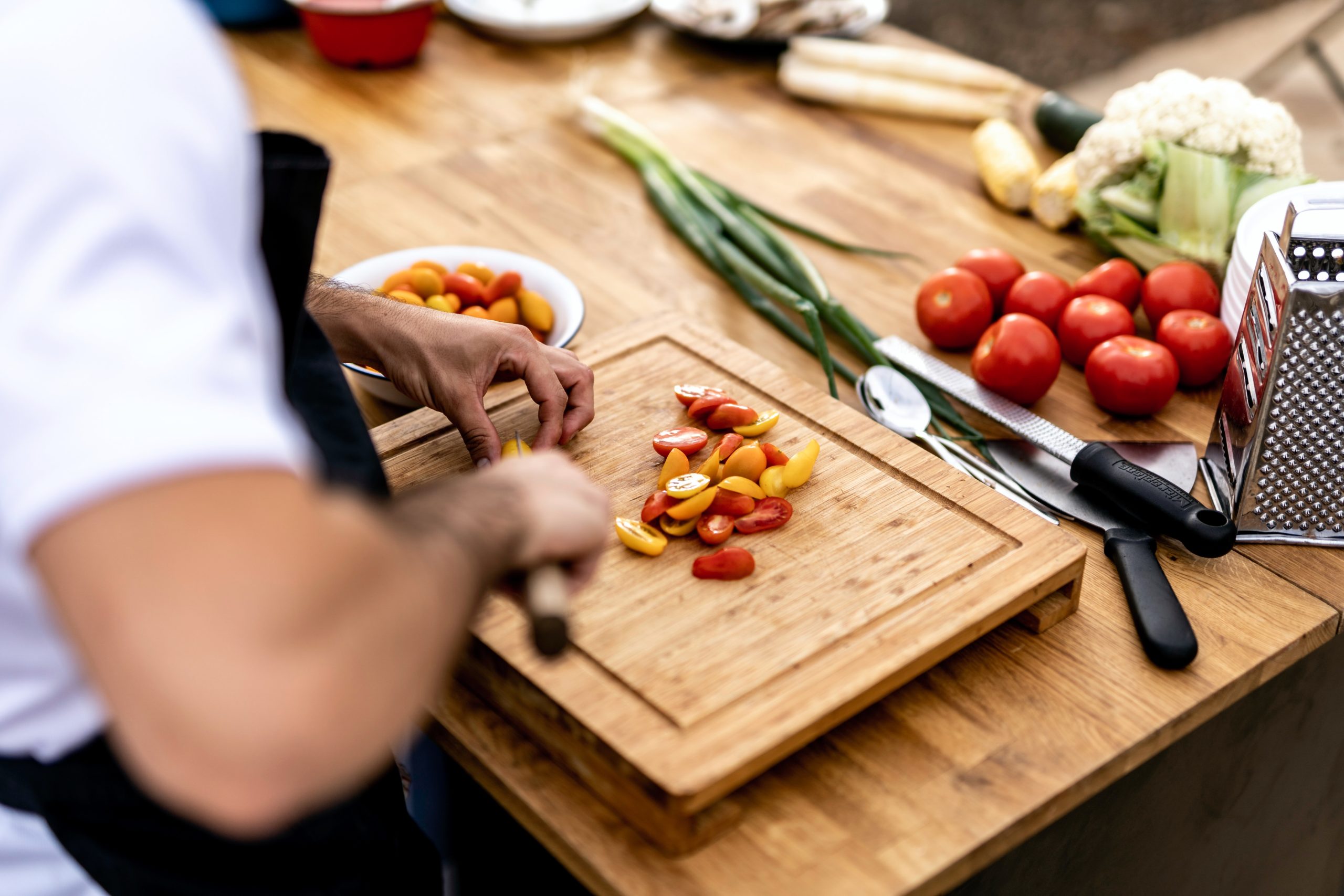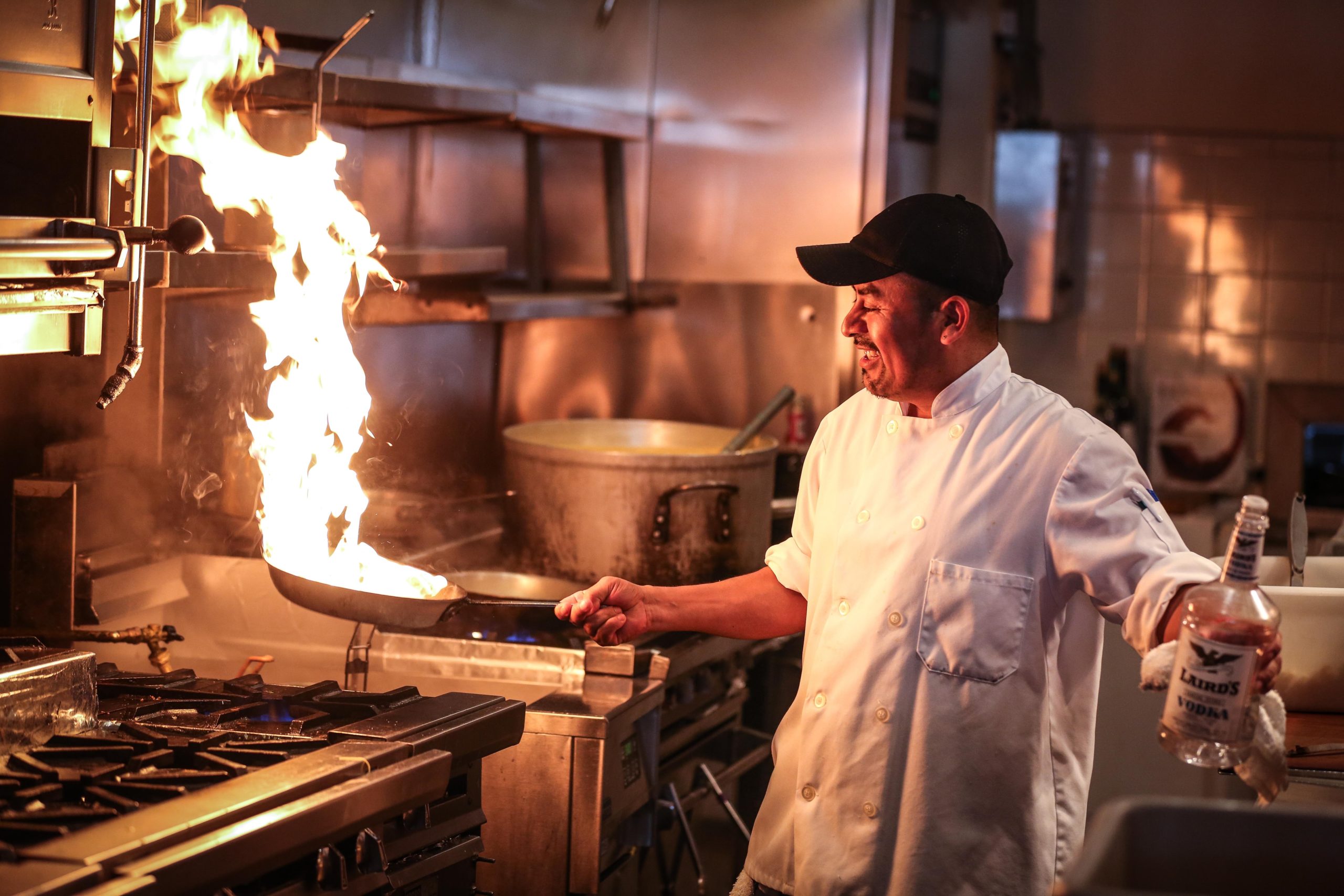In the world of culinary arts, the kitchen is both a sanctuary and a battlefield. Over the centuries, the tools and attire of chefs have evolved, adapting to the changing demands of cuisine, culture, and technology. A chef’s toolkit goes beyond just pots and pans; it’s an extension of their skills, a reflection of their professionalism, and a testament to their passion. It includes many different types of tools, many different brands, such as Chef K Gear, and more! In this article, we will delve deep into the essentials that today’s chefs swear by, ensuring they are always at the pinnacle of their craft.
Essential Kitchen Tools For Today’s Chef

Knives And Cutlery
Arguably the most prized possession in any chef’s toolkit, a good set of knives is indispensable. There are various knives tailored for specific tasks:
Chef’s Knife: Versatile and used for a wide range of tasks, from dicing vegetables to slicing meats.
Paring Knife: Perfect for more delicate tasks like peeling and trimming.
Serrated Knife: Ideal for slicing bread or anything with a tougher exterior and soft interior.
However, possessing these knives is only half the task. Proper maintenance ensures longevity and optimal performance. Regular honing keeps the edge aligned, while periodic sharpening restores its cutting capability. And let’s not forget the importance of proper storage—magnetic strips, wooden blocks, or dedicated knife guards help in preserving the blade’s integrity.
Cookware And Bakeware
The tools a chef uses to apply heat can be as crucial as the ingredients themselves. Here are some of the must-haves:
Frying Pans: Essential for sautéing, searing, and frying. While non-stick pans are great for certain tasks, a stainless steel or cast iron skillet can be a chef’s best friend for achieving that perfect sear.
Saucepans: For simmering sauces, boiling small quantities of pasta, or steaming vegetables. Their versatility makes them a staple in every kitchen.
Baking Sheets And Dutch Ovens: Perfect for roasting, baking, and slow-cooking. The material and construction of these items play a pivotal role in consistent heat distribution, ensuring delicious outcomes every time.
Specialized Equipment
As cuisine evolves, so do the gadgets chefs use. Here are some modern additions to the toolkit:
Immersion Blenders: Offering convenience and precision, these handheld blenders make puréeing soups or whipping up emulsions a breeze.
Sous-Vide Machines: A technique that has moved from the world’s top restaurants to home kitchens, sous-vide cooking ensures food is cooked evenly and retains maximum flavor.
Digital Thermometers: Guesswork has no place in a professional kitchen. With digital thermometers, chefs ensure meats and baked goods are cooked to perfection.
But it’s not just about modernity. Classic tools like the mortar and pestle for grinding spices, the chinois for straining sauces, and mandolins for thinly slicing vegetables, remain relevant, blending tradition with contemporary culinary practices.
Essential Attire For The Professional Chef
Chef’s Jacket And Pants
The traditional chef’s white uniform, or ‘whites’, is more than just a fashion statement. It signifies cleanliness, professionalism, and pride. But modern chef wear isn’t just about appearance:
Fabric And Design: Modern chef’s jackets are designed for maximum comfort, using breathable materials that can withstand the heat of the kitchen while ensuring the chef remains cool. Added features, like vented backs and mesh panels, enhance comfort.
Durability: Given the demands of a bustling kitchen, jackets and pants need to be durable, able to resist stains, and withstand frequent washing without fading.
Footwear: Balancing Comfort And Safety
A chef spends long hours on their feet, and choosing the right footwear is paramount:
Non-Slip Sole: Safety is a priority. Wet kitchen floors can be hazardous, so non-slip soles are essential to prevent accidents.
Comfort: Features like arch support, cushioned soles, and breathable material can make the difference between ending a shift with a spring in one’s step or aching feet.
Chef Aprons: A Blend Of Functionality And Style
While aprons serve to protect the chef’s uniform from spills and splatters, they have also become a canvas for personal expression:
Material Matters: Aprons should be made of durable, stain-resistant fabric. Modern designs, like those from Chef K Gear, incorporate materials that are both resilient and stylish.
Features: Pockets for holding essential tools, adjustable neck straps, and long ties make aprons more than just protective wear—they’re functional garments designed for the busy chef.
Small Accessories That Make A Big Difference
Tool Rolls And Knife Bags
For chefs who move from one kitchen to another or attend culinary events, safely transporting their tools is crucial:
Protection: These accessories safeguard sharp tools, ensuring they remain in top condition while preventing accidental injuries.
Organization: With multiple compartments, chefs can easily find and access their tools, enhancing efficiency.
Thermometers And Timers
Precision can make the difference between a good dish and a great one:
Variety: From meat thermometers to candy thermometers, selecting the right one for the task is crucial.
Digital Vs. Traditional: While many chefs now prefer the accuracy of digital devices, some traditionalists swear by the reliability of analog timers and thermometers.
Specialized Utensils
These tools might not be used every day, but when needed, they’re indispensable:
Zesters And Microplanes: For introducing fresh citrus notes or finely grating hard ingredients.
Channel Knives: Perfect for creating decorative garnishes, adding a touch of elegance to dishes.
These utensils, while seemingly minor, can elevate a dish’s presentation, showcasing the chef’s attention to detail and mastery.

The Digital Chef: Modern Tech In The Kitchen
Culinary Apps And Software
Technology has always had a hand in revolutionizing industries, and the culinary world is no exception. Software and apps have become the modern chef’s silent assistants:
Recipe Management: Gone are the days of handwritten recipes. Digital platforms allow chefs to store, categorize, and easily retrieve their culinary formulas, ensuring consistency and aiding in experimentation.
Inventory Tracking: Streamlining kitchen operations, apps enable chefs to monitor stock levels, predict order requirements, and minimize food wastage.
Menu Planning: Interactive platforms assist chefs in designing menus based on seasonality, dietary requirements, and even cost analysis.
Social Media And Online Presence
Digital platforms have also changed the way chefs engage with their audience:
Showcasing Skills: Platforms like Instagram and YouTube allow chefs to give followers a behind-the-scenes look, share recipes, or demonstrate techniques.
Brand Building: A strong online presence can bolster a chef’s reputation, leading to opportunities like book deals, TV appearances, or consultancy roles.
Engaging With The Community: Chefs can connect with peers, share experiences, seek feedback, and even foster mentor-mentee relationships via online culinary communities.
The life of a modern chef is a blend of tradition and innovation. From wielding age-old tools like the mortar and pestle to utilizing cutting-edge software, the chef’s toolkit has expanded and evolved, mirroring the dynamic nature of the culinary arts. Whether it’s the sturdy reliability of a chef’s knife, the functional elegance of Chef K Gear aprons, or the vast potential of digital platforms, each element serves a singular purpose: to enhance the chef’s ability to create culinary masterpieces. As food continues to be an ever-evolving art form, the tools and technologies serving chefs are bound to keep pace, ensuring that the heart of the kitchen beats strong and inspired.
Hey welcome to my blog . I am a modern women who love to share any tips on lifestyle, health, travel. Hope you join me in this journey!

Speak Your Mind